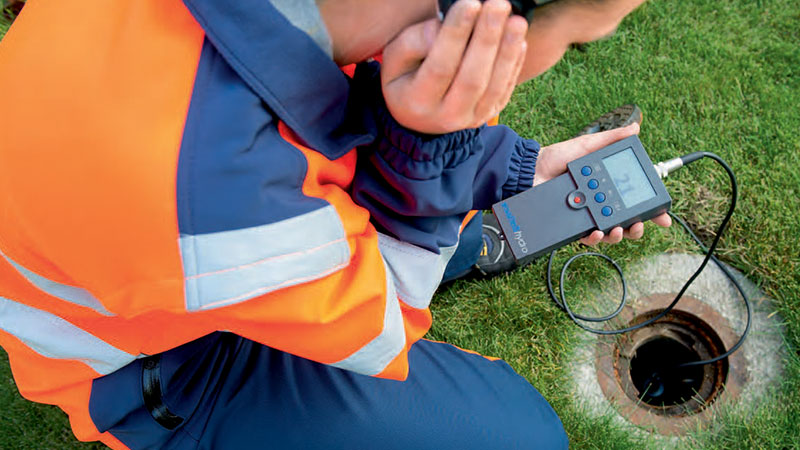Innovative Solutions for Very Early Detection of Water Leakages in Buildings and Infrastructure
From advanced leakage discovery modern technologies to the release of IoT sensing units for real-time surveillance, the landscape of leakage avoidance is advancing swiftly. Automated water circulation evaluation systems are improving just how leakages are determined and attended to, leading the method for a proactive method to water leak detection.
Advanced Leak Detection Technologies
Advanced leakage detection modern technologies, geared up with cutting-edge sensing units and algorithms, play a critical function in quickly determining and determining water leakages in various settings. Electromagnetic sensors can recognize modifications in electro-magnetic fields created by water, providing yet an additional layer of leak discovery capacity.

IoT Sensors for Real-Time Surveillance
In the world of modern water leak detection, the assimilation of IoT sensing units for real-time tracking stands for a critical improvement in boosting proactive leak detection abilities. These sensing units provide continual monitoring of water systems, supplying real-time information on water circulation prices, pressure variations, and temperature modifications. By leveraging IoT innovation, these sensing units can detect also the smallest anomalies in water usage patterns, allowing early identification of prospective leaks before they intensify into major problems.
IoT sensors transmit information to a centralized system, where advanced formulas examine the details and create signals or alerts when abnormalities are identified. This real-time surveillance capacity enables building proprietors or center managers to promptly address leakages, lessening water damage, reducing repair prices, and saving water resources.
Furthermore, IoT sensing units can be incorporated with building management systems, permitting for automatic reactions to spotted leakages, such as shutting off water valves or turning on pumps to reduce the impact of leakages. Generally, the implementation of IoT sensing units for real-time tracking considerably boosts the effectiveness and effectiveness of water leakage detection in structures and infrastructure.
Equipment Discovering Algorithms for Leak Forecast

One key benefit of utilizing machine understanding for leakage prediction is its capacity to constantly learn and enhance its accuracy with time. As even more data is gathered and fed into the formula, it can refine its forecasts and adapt to transforming conditions, inevitably boosting the reliability of leakage discovery systems.
Additionally, artificial intelligence algorithms can aid in determining refined indications of leakages that may go undetected by conventional monitoring techniques. water leak detection. By like it analyzing intricate data embed in real-time, these formulas can offer very early warnings and signals, enabling punctual intervention and precautionary upkeep to mitigate prospective water damages and associated expenses
Using Thermal Imaging for Leakage Detection
Thermal imaging innovation uses an encouraging strategy for detecting water leaks in various systems and infrastructures. By utilizing infrared radiation and temperature variances, thermal imaging cameras can identify hidden leaks that are not conveniently noticeable to the nude eye.
Among the crucial benefits of thermal imaging for leak detection is its non-intrusive nature. Unlike conventional methods that may require getting into wall surfaces or floorings to find leaks, thermal imaging allows for non-destructive testing. This not only conserves time and lowers prices yet likewise reduces interruption to the building or infrastructure being assessed. Additionally, thermal imaging can quickly scan huge locations, offering an extensive overview of possible leakage sources in a timely manner. On the whole, making use of thermal imaging innovation enhances the efficiency and precision of water leakage discovery, making it an important tool for keeping the stability of buildings and frameworks.
Automated Water Circulation Analysis Equipments
Exactly how can computerized water flow evaluation systems transform the discovery and administration of leakages in different systems and frameworks? Automated water flow analysis systems use a proactive technique to leak discovery by continuously keeping track of water circulation prices and patterns. By establishing standard information, these systems can rapidly recognize discrepancies that might show a leak, allowing punctual intervention to avoid comprehensive damage.
These systems utilize innovative formulas to analyze real-time data and give immediate notifies when abnormalities are detected, enabling for speedy activity to be taken. Additionally, automatic water flow evaluation systems can be incorporated with building management systems or IoT platforms, improving total performance and enabling remote tracking abilities.
Moreover, the information gathered by these systems can be utilized for predictive maintenance purposes, helping to recognize possible weak factors in the framework prior to leaks occur. Overall, the implementation of computerized water circulation evaluation systems can dramatically boost leakage discovery and administration methods, eventually leading to cost financial savings, lowered water wastefulness, and boosted sustainability in buildings and infrastructure.

Conclusion
In final thought, the combination of sophisticated leakage discovery modern technologies, IoT sensing units, machine learning algorithms, thermal imaging, and automated water flow evaluation systems offers innovative solutions for very early discovery of water leakages in structures and framework. These innovations allow real-time tracking, prediction of leaks, and efficient official site discovery approaches to stop water damages and waste. Carrying out these options can assist in maintaining the integrity and sustainability of water systems in numerous setups.
Comments on “Water Leak Detection: Exactly How to Determine and Repair Leaks Before They Cause Damage”